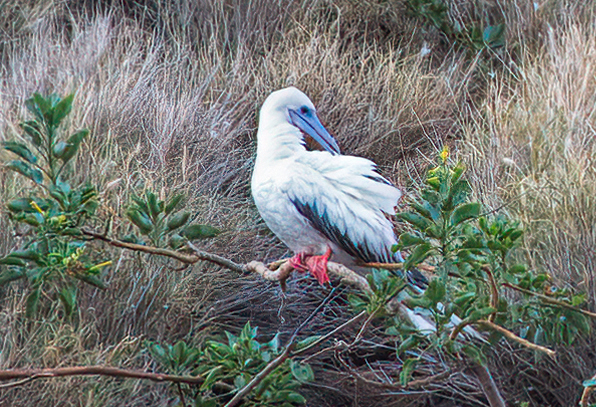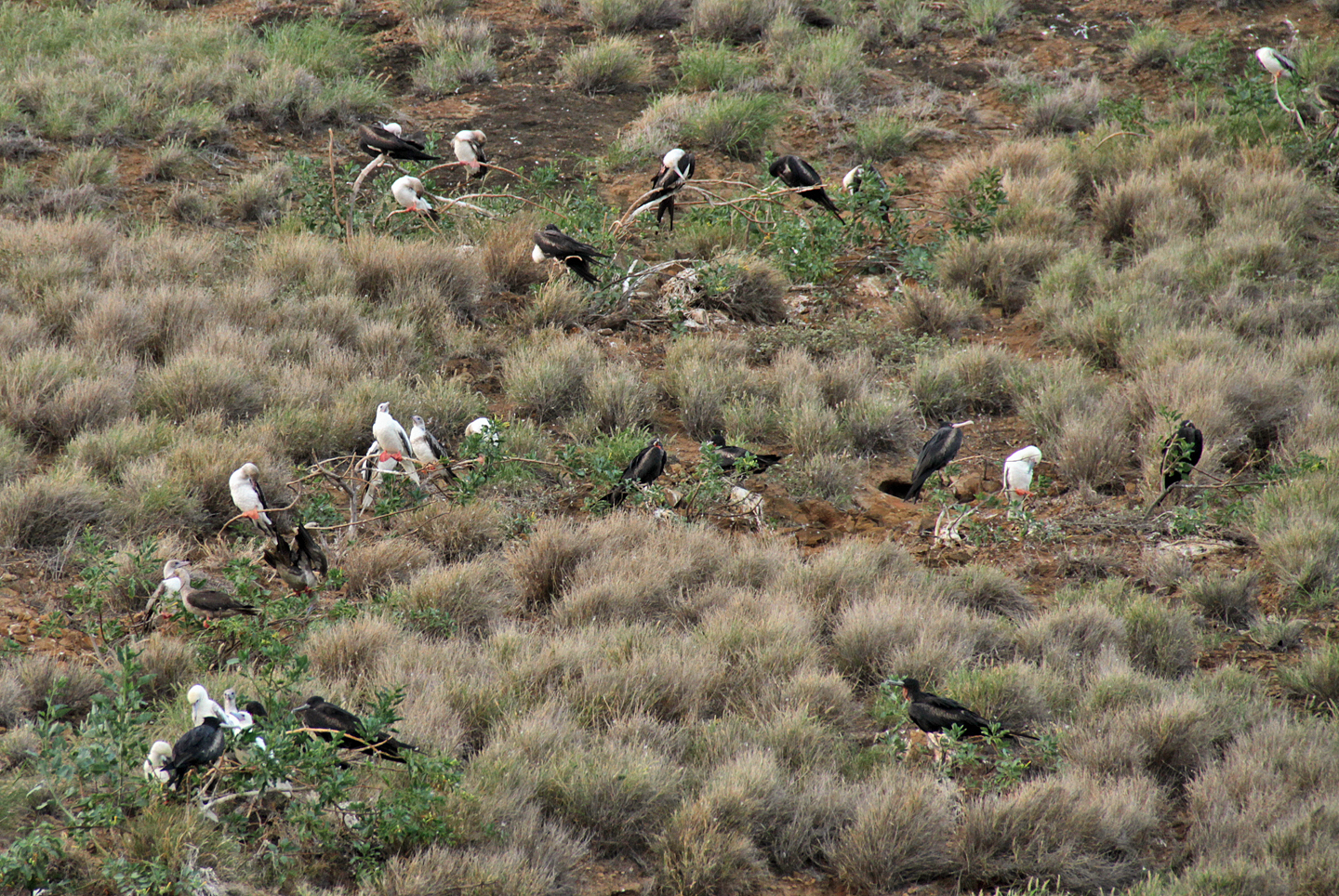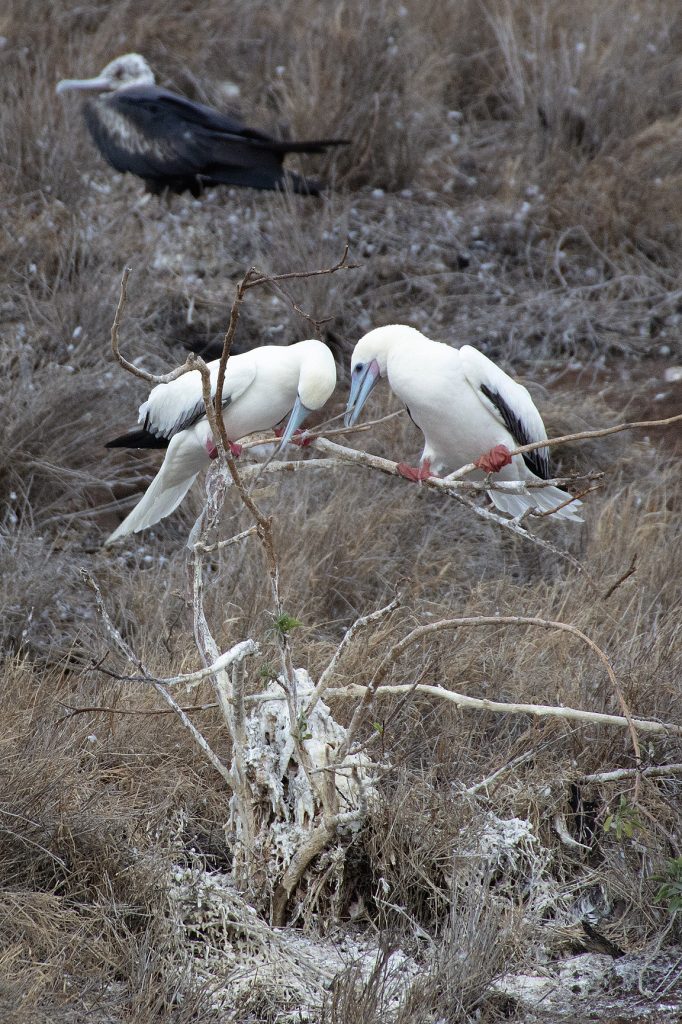
The beautiful coral-red feet and legs were tricky to see from the boat, but through the camera lens we could make them out. Our captain, Andy Schwanke, had spotted a group of large white birds perched on a shrub on the inner slope of Molokini about a hundred feet above sea level. They were Red-footed boobies (Sula sula) and they stood out from the hundreds of mostly-black Great frigatebirds that roost on the island each summer nowadays.
I say nowadays because when I first started diving at Molokini in 1986 no large seabirds roosted there. Much smaller petrels and shearwaters populated the island but we rarely saw them. They went out to sea before sunrise to feed and returned at dusk. Then beginning in the 1990s numbers of Great frigatebirds started to appear every spring. They roosted on the island through the summer and by fall they all left for their wintering grounds.
We had become accustomed to the frigatebirds dotting the island when we arrived in the morning, so when Andy spotted this cluster of white birds we were excited. Red-footed boobies are typically found in the northwestern Hawaiian Islands and Kauai and O‘ahu. Uncommonly they are found in the waters of Moloka‘i, Lana‘i, Maui and Hawai‘i, and then, usually only single birds are sighted. These were the first Red-footed boobies that we had ever seen roosting on Molokini – and there were at least 20 birds in total.

Red-footed boobies are the smallest members of their family and are the only boobies that can perch due to their small, light bodies and short legs. Their short legs and light bodies allow them to perch on branches or other vegetation. At first glance Molokini appears to be covered by nothing but grasses. But upon getting closer you can see a few small shrubs, and this is where they had congregated.
We’ll update this article and report on whether they stay, grow in numbers, leave. etc.

2020 Update: The Red-footed boobies left after a couple weeks BUT were back again by Sept. 4, 2020. They were likely there before then, but we did not visit Molokini from mid-March to August because were were not operating due to Covid-19. We counted at least 20 birds in Sept., just like last year and as of Sept. 18, they were still there. We do not know when they left, but they were all gone by Nov. 8, 2020.
2021 Update. We saw our first red-footeds of 2021 on April 13. They were perched on a shrub along with several frigate birds around 6:30 AM.
We also recorded another new seabird species for Molokini in 2020 which you can read about here.
Written by Pauline Fiene. Photos as credited
***********
http://hbs.bishopmuseum.org/birds/rlp-monograph/pdfs/03-PHAE-GRUI/RFBO.pdf
Harrison, Craig S. 1990. Seabirds of Hawai‘i. Ithaca, N.Y. : Comstock Pub. Associates.

Comments 2
Hello. We were out at Molokini today and saw 2 red-footed boobies. Beautiful!
Author
I know I know! We saw three flying above us there last week :-).